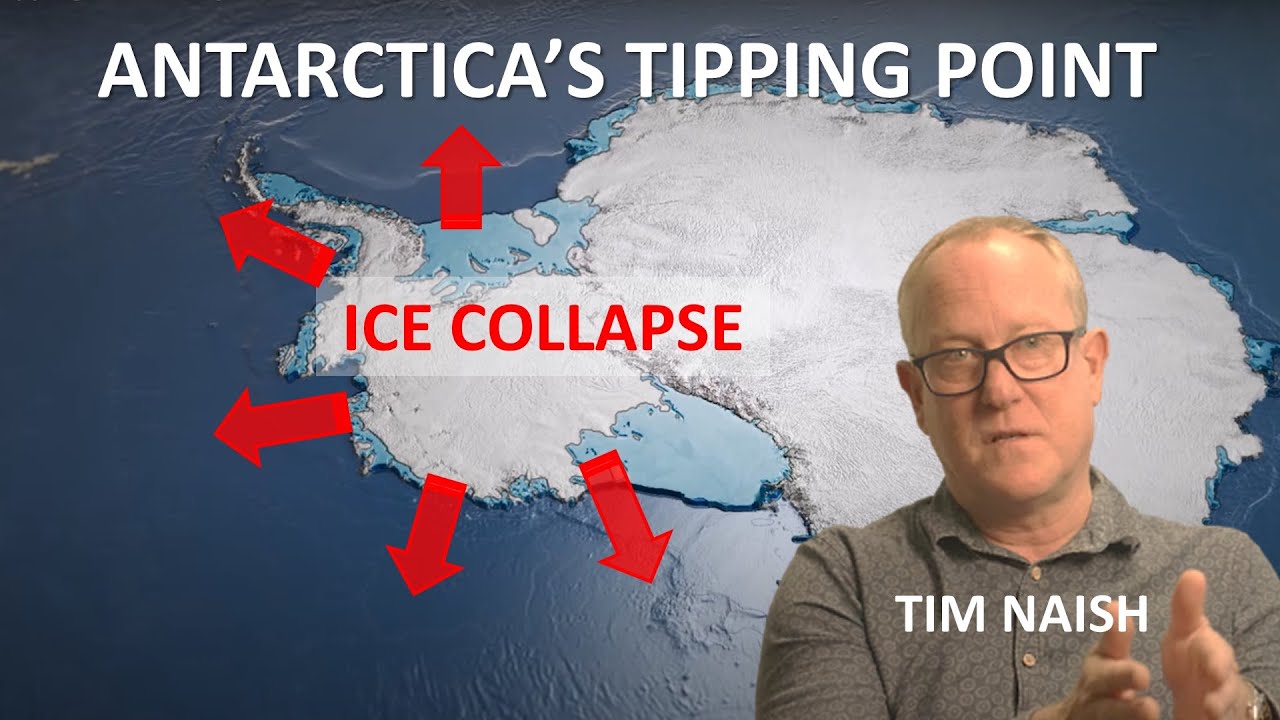Antarctica'stipping Point - The Science Of Ice Collapse
Unleash Your Creative Genius with MuseMind: Your AI-Powered Content Creation Copilot. Try now! 🚀
The climate crisis is no longer a distant threat. It is a ticking time bomb, waiting to explode and reshape our world as we know it. One of the most critical tipping points in this crisis is the irreversible loss of the Antarctic ice shelves. Once these ice shelves disappear, we will face a rapid and unprecedented rise in sea levels, surpassing current projections.
The Antarctic Ice Shelves: Guardians of Stability
To understand the significance of the Antarctic ice shelves, we must first comprehend their role in the delicate balance of our planet's climate system. The Antarctic ice sheet rests upon continental bedrock, but the ice itself flows from higher elevations to the ocean. As it reaches the ocean, it forms massive floating ice shelves, such as the awe-inspiring Ross Ice Shelf, which spans an area as vast as France or Texas.
These ice shelves are crucial in preventing the uncontrolled flow of ice from the continent into the ocean. They act as barriers, slowing down the movement of ice under gravity. However, these majestic formations are under threat. The warming oceans are causing them to melt and thin at an alarming rate, particularly in West Antarctica. The Larsen ice shelf, once the size of England, disintegrated within months, triggering a tenfold increase in the speed of glaciers feeding into it.
A Domino Effect: The Collapse of Antarctic Ice Cliffs
But there is another perilous instability lurking beneath the surface. West Antarctica, sitting in a massive bowl below sea level, faces the relentless assault of warm ocean waters. As the ice sheet retreats into this bowl, its edges lose their grip, teetering on the brink of collapse. The consequences are akin to a domino effect, with ice cliffs toppling and cascading into the ocean.
Witnessing the colossal ice cliffs of Jakobshavn Glacier in Greenland crumble into the sea is a sight to behold. If a similar scenario unfolds on a large scale in Antarctica, our estimates of sea level rise will be grossly underestimated. The repercussions will be dire, as entire coastlines become submerged, displacing millions of people and forever altering our world.
The Carbon Dioxide Conundrum: The Pacemaker of Earth's Climate
Ultimately, the root cause of these tipping points lies in the alarming levels of carbon dioxide in our atmosphere. Carbon dioxide acts as the pacemaker of Earth's climate, intricately linked to the natural cycles that regulate ice ages. The levels of CO2 and Earth's temperature are inextricably entwined, as revealed by ice core and geologic records spanning millions of years.
To gain insights into the future trajectory of our planet, scientists have delved into the past. By drilling sediment cores from around the Antarctic margin, researchers have unearthed evidence from three million years ago when CO2 levels exceeded 400 parts per million. The revelations were staggering: the Ross Sea was five degrees warmer, devoid of sea ice, and the West Antarctic Ice Sheet had collapsed. Global sea levels surged by approximately 20 meters.
The Urgency of Action: A Global Response
The Paris Agreement, aimed at limiting global warming to below two degrees, underscores the urgency of the situation. Even if we achieve this target, we face a century of sea level rise amounting to 50 centimeters. This increase is already baked into the system, and its impact will be far-reaching. Rising sea levels, combined with intensified storms, will result in annual coastal flooding events that devastate coastal communities worldwide.
Yet, there is hope. The latest ice sheet computer models, incorporating the instabilities of Antarctic ice shelves, predict up to two meters of sea level rise per century. However, this catastrophic scenario can be averted if we take immediate and aggressive action to reduce our carbon emissions.
The tide is turning, with a sea change in global awareness and activism. Young people are taking to the streets, demanding action. Politicians are beginning to prioritize the climate crisis. Governments are starting to respond. Each one of us can make a significant impact by reducing our carbon footprint. It is a collective effort, a global response, that will shape a better world for both our climate and ourselves.
In conclusion, the tipping point of the Antarctic ice shelves represents a critical juncture in the climate crisis. The irreversible loss of these ice shelves will unleash a catastrophic rise in sea levels, far surpassing current projections. However, by understanding the interconnectedness of our actions and the urgency of the situation, we can still alter the course of our planet's future. Let us rise to the challenge, for the sake of our planet and future generations.

Related Recaps
- The perils of wrong hyphenation
- ORAÇÃO DA MANHÃ COM PASTOR ANTÔNIO C. JÚNIOR | 18 DE ABRIL
- 2023 GMC Sierra 2500HD Augusta GA, Aiken, SC, Grovetown GA, Evans GA, North Augusta SC K38940
- Austin's Greenbelts Are Being Destroyed By Homeless Camps
- Arrestation de Rached Ghannouchi en Tunisie: "Un non-événement?" • FRANCE 24